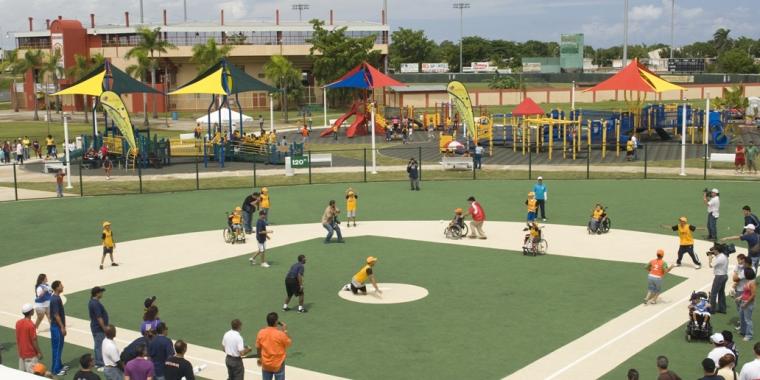
This image courtesy of The Miracle League
The parks of years ago and the parks of today may all be members of the same family but the latter branch of the family tree is evidence that evolution is not just alive and well but thriving and growing.
Yes, there are baseball diamonds and soccer fields (and statues of local war heroes or town founders, as well as various other monuments) but there are also plenty of installations that give evidence to the fact that parks are not only pushing the envelope but licking the stamp when it comes to welcoming new populations. Here are some of the trends:
Inclusive Playgrounds: Playgrounds that can accommodate those with physical and cognitive impairments are not new but they are growing in number, and nowhere is that more evident than in parks.
In Stockton, California, Sandman Park’s playground welcomes those of all ages and abilities. It allows users to enjoy the facilities, as well as to challenge themselves: “Throughout the playground educational and fun activities can be seen like an analog clock with the question, "What time is it?" There's a "one line puzzles" activity, a "learn to read braille" where children can learn numbers and the alphabet, and even an activity to learn sign language.”
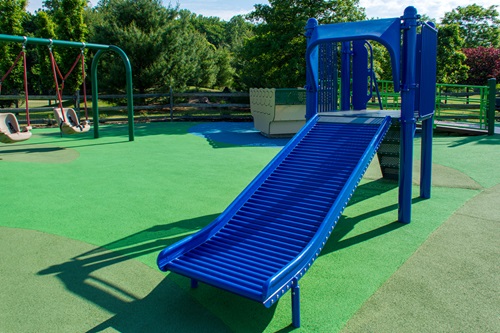 "This new equipment speaks to physical, sensory, balance, special orientation, cognitive, auditory, tactile and imaginative development, with wheelchair accessible elements, such as ramps that are also play areas, sensory rails, a rocker platform, manipulative play elements, and a stability sanctuary," city officials stated in the news release.
"This new equipment speaks to physical, sensory, balance, special orientation, cognitive, auditory, tactile and imaginative development, with wheelchair accessible elements, such as ramps that are also play areas, sensory rails, a rocker platform, manipulative play elements, and a stability sanctuary," city officials stated in the news release.
Seattle’s Child covered the fact that some of the leaders in the design of inclusive playground equipment are those who could not join their friends on playground equipment while growing up because of physical challenges.
“At their core, it’s about creating a playground in a space that has something for everyone,” said Jill Moore, an inclusive play specialist at Landscape Structures and an individual who grew up unable to use playgrounds because she was confined to a wheelchair. “It’s about creating a playground that people can use, whatever their needs and abilities may be, and provide(s) an environment where they can thrive.”
Whether a playground meets the inclusive standard isn’t always clear, however.
“It’s kind of a nebulous term,” says Rachel Schulkin, spokeswoman for Seattle Parks and Recreation. “There isn’t a line we all have collectively defined.”
But according to the Post-Crescent, an increasing number of schools and communities are realizing the value of these spaces, and, although they can be expensive, are making them a reality.
“It is well-acknowledged and known that having playgrounds that don’t provide opportunities for every child at every ability is not something that we’re tolerating anymore,” said Ericka Steltz, a Wisconsin sales representative for Little Tikes Commercial through Northland Recreation.
The Americans with Disabilities Act, which went into law in 2010, is considered a baseline for accommodations (and by some accounts, is a worst-care scenario, if that is the only effort made by a destination); advocates for those with challenges say far more is needed than is covered by the ADA. While under ADA, parks and playgrounds must comply with specific requirements, like how steep a slope can be and how many components are at ground level, it does not really make parks enjoyable for all, or open to all.
For example, Jill Moore says, a steering wheel on a post is considered an ADA element, but it’s not interesting to children. Wood chips are ADA-compliant, but wheelchairs and walkers get stuck in them. Inclusive playgrounds, therefore, need to exceed accessibility standards.
Google the term, “inclusive playground,” and you’ll find information on websites for any number of manufacturers; the fact that the industry is growing means more companies are invested in making sure no child sits outside the playground and wishes for a different life.
Sensory-Friendly Facilities: Sometimes, disabilities and challenges are invisible but users are suffering anyway. Those who are not neurotypical (including those with Asperger’s Syndrome, as well as a host of others) are being supported by new installations.
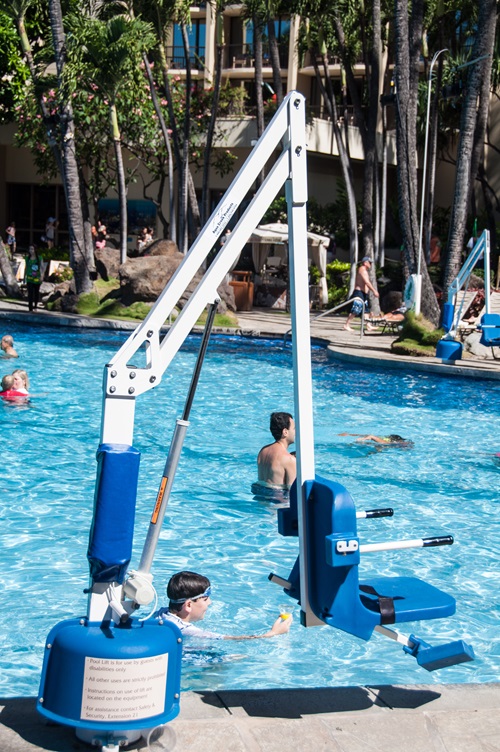 In Maryland, a new sensory trail loop at Centennial Park North's playground area opened this past fall, and this summer, enjoyed its first busy season of use. The trail loop includes music features, sensory panels and sensory play equipment near the all-access playground.
In Maryland, a new sensory trail loop at Centennial Park North's playground area opened this past fall, and this summer, enjoyed its first busy season of use. The trail loop includes music features, sensory panels and sensory play equipment near the all-access playground.
“Parks are a place where our entire community is welcome. It is a place to meet neighbors, share experiences and rejuvenate,” said Howard County Executive Calvin Ball at the trail loop's recent unveiling. “This new sensory trail helps us build upon our efforts to be more inclusive for our residents of all ages and abilities.”
In the Stockton park, for example, "There's even an escape platform where if kids get overstimulated or need a break, they can take a break," city spokesperson Connie Cochran told The Record.
And in Seattle, an inclusive feature can be something as simple as the molded bucket swings facing opposite directions at Evergreen Park in Bremerton. Kids can choose which way they want to look, at the playground where all the action is, or at nature if they’re feeling overwhelmed.
Recycled Amenities: Remember the old wooden benches that used to get splintery and unusable? Wave goodbye to them. In Stockton’s much-heralded inclusive playground, there is a bench made out of recycled bags. Clean, dry items such as produce bags, cereal box liners, newspaper sleeves, bubble wrap, and more are some of the items that can go into the making of a bench.
It takes approximately 1,000 pounds of recyclable material to make one bench but considering how very much recyclable material is generated by families and corporations each week (or each day, in some areas), the 1,000-pound mark isn’t as hard to reach as someone might think.
Obviously, the presence of recycle containers in parks is nothing new, either, and are an excellent outlet for the collection of materials like aluminum cans, plastic bottles and paper.
Grounding Parks: The concept of going without shoes is admittedly nothing new. An entire park, known as a grounding park, or grounding trail, where users are encouraged to explore sans footwear is another concept entirely.
The Barefoot Trail, the nation’s first grounding park, is now open in the Flagstaff, Arizona. This innovative park is designed to promote holistic health and wellbeing through grounding, also known as earthing.
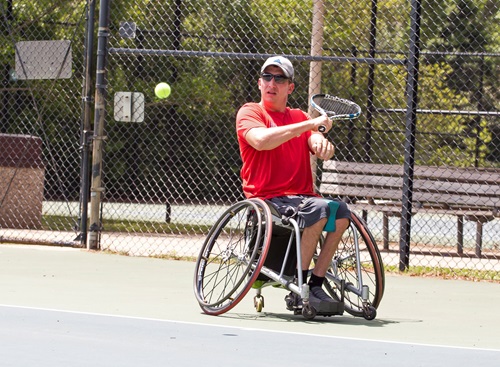 By walking barefoot on natural surfaces, say proponents of the theory, individuals can reconnect with the earth’s natural energy, which may help reduce stress, lower inflammation and improve sleep. In a time when people are becoming more health conscious, grounding is an accessible and enjoyable way to get back to nature.
By walking barefoot on natural surfaces, say proponents of the theory, individuals can reconnect with the earth’s natural energy, which may help reduce stress, lower inflammation and improve sleep. In a time when people are becoming more health conscious, grounding is an accessible and enjoyable way to get back to nature.
Other ways of grounding, including standing in water (or floating in it), or just touching bark and grasses while hiking, is believed to be beneficial.
Amenities for Those with Color Vision Deficiency: The problem with color blindness (also known as color vision deficiency or CVD) has been that it often is not believed to be a disability, no matter how much it affects users’ quality of life.
According to Matador Network, however, in 2023, Virginia State Parks installed a trial EnChroma-adapted viewfinder at Natural Tunnel State Park, based on a suggestion from the park’s chief ranger, who is color blind.
The mounted viewing devices look like the mounted binoculars you’ll find at many lookout points in parks, but “are equipped with special lenses from EnChroma designed to help those with red-green Color Vision Deficiency (CVD) experience an expanded range of visible color,” according to the release. The viewers provide an extra level of accommodation during the height of the fall season, when leaves make a spectacular show.
In 2024, the park installed them at the remaining 42 parks in the system. (Check the Matador Network link for images of the difference the viewfinders make.)
One Virginia park, Natural Bridge State Park, is now the only state park in the U.S. equipped with RightHear technology, allowing blind and low-vision visitors to better access all the park has to offer, according to the local ABC affiliate, which detailed the technology and what it provides.
Equipment to Help Those with Physical Challenges Explore Parks: Just in time for the 2024 vacation season, Great Smoky Mountains National Park announced the presence of new equipment to help visitors with disabilities explore hiking trails, go mountain biking, paddle kayaks and camp overnight in the mountains of North Carolina and Tennessee.
As noted in The Washington Post, for its inaugural year, the national park and its partners organized three hikes and one mountain bike outing for parkgoers who use adaptive gear. This year, the program will feature three hikes, two mountain bike rides, one kayak trip and one night of backcountry camping.
Eric Gray, founder and executive director of Catalyst Sports, one of the program’s key partners, said the nonprofit will provide three hiking chairs (plus two from the park), seven adaptive kayaks and a dozen mountain bikes, in addition to snacks and drinks. Experienced staff members and volunteers will help with the fit and handling of the gear.
“We’re trying to remove as many barriers as possible,” Gray said. “All they need to do is show up.”
Additionally, beaches are beginning to make sand-friendly and waterproof wheelchairs available to patrons who need them in order to experience the joy of being with friends and family, and not having to be confined to hotels or boardwalks.
At swimming pools nationwide, lifts are being added, so that users with physical challenges can get into (or out of) the water, without having to navigate steps or ladders. Zero-entry pools, another trend, allow users to enter the water easily (again, without steps or ladders).
In fact, parks may be on the cutting edge of accessibility to fitness opportunities; according to Athletic Business, a recent survey by the American Council on Exercise has found that 81 percent of individuals with a disability did not feel welcome in the fitness space and that more than 90 percent do not believe that exercise professionals are adequately trained to work with this population.
Dementia-Friendly Parks: You’re behind, USA – catch up. Australia leads the way in parks with special facilities for those with dementia, including dementia-friendly sensory trails, complete with comfortable seats, easy-to-read signage and places where users are encouraged to touch the bark of trees or smell nearby plants.
There are signs, however, that the U.S. is gaining some ground, at least. Local nature centers are among the facilities to join the Spark! cultural program, which provides workshops for people with dementia.
Sport-Specific Facilities: Parks have historically been the place where many individuals with disabilities saw others playing sports but couldn’t join in. Those days are gone, and evidence is everywhere.
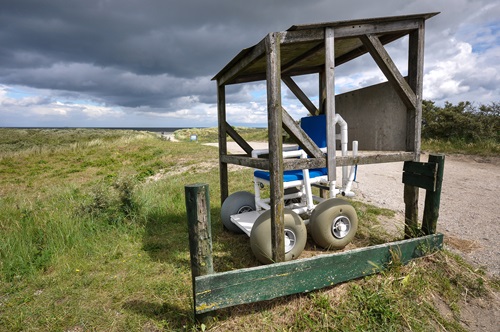 We already know about The Miracle League, the baseball program that uses specially designed fields to meet the goal stated in its motto: Everyone Can Play. But more facilities are being added at the municipal level, rather than just in large-scale private sports parks.
We already know about The Miracle League, the baseball program that uses specially designed fields to meet the goal stated in its motto: Everyone Can Play. But more facilities are being added at the municipal level, rather than just in large-scale private sports parks.
In Augusta, George, for example, the North Augusta Miracle League Field was the product of a joint venture by local disability advocate and recreation group, The RECing Crew, along with the City of North Augusta Parks, Recreation & Tourism. In Montgomery County, Maryland, the Washington Nationals Miracle Field, located in South Germantown Recreational Park, serves as the home for the Miracle League of Montgomery County.
The US Tennis Association offers its Wheelchair Tennis League programs nationwide, including in parks. It also sanctions tournaments and awards grants to organizations that want to start wheelchair tennis programs in communities.
At the end of the day, parks are opening their doors to a wider population than ever before. But that doesn’t mean event owners and managers don’t want more.
“Our dream park is something that is fully inclusive and accessible,” said Stephanie Davis, Program Director of The Miracle League, told SDM. “That means from the moment people exit their cars, including not just the fields but the bathrooms, concessions and playground, with adult changing tables and other amenities in the rest rooms.”

